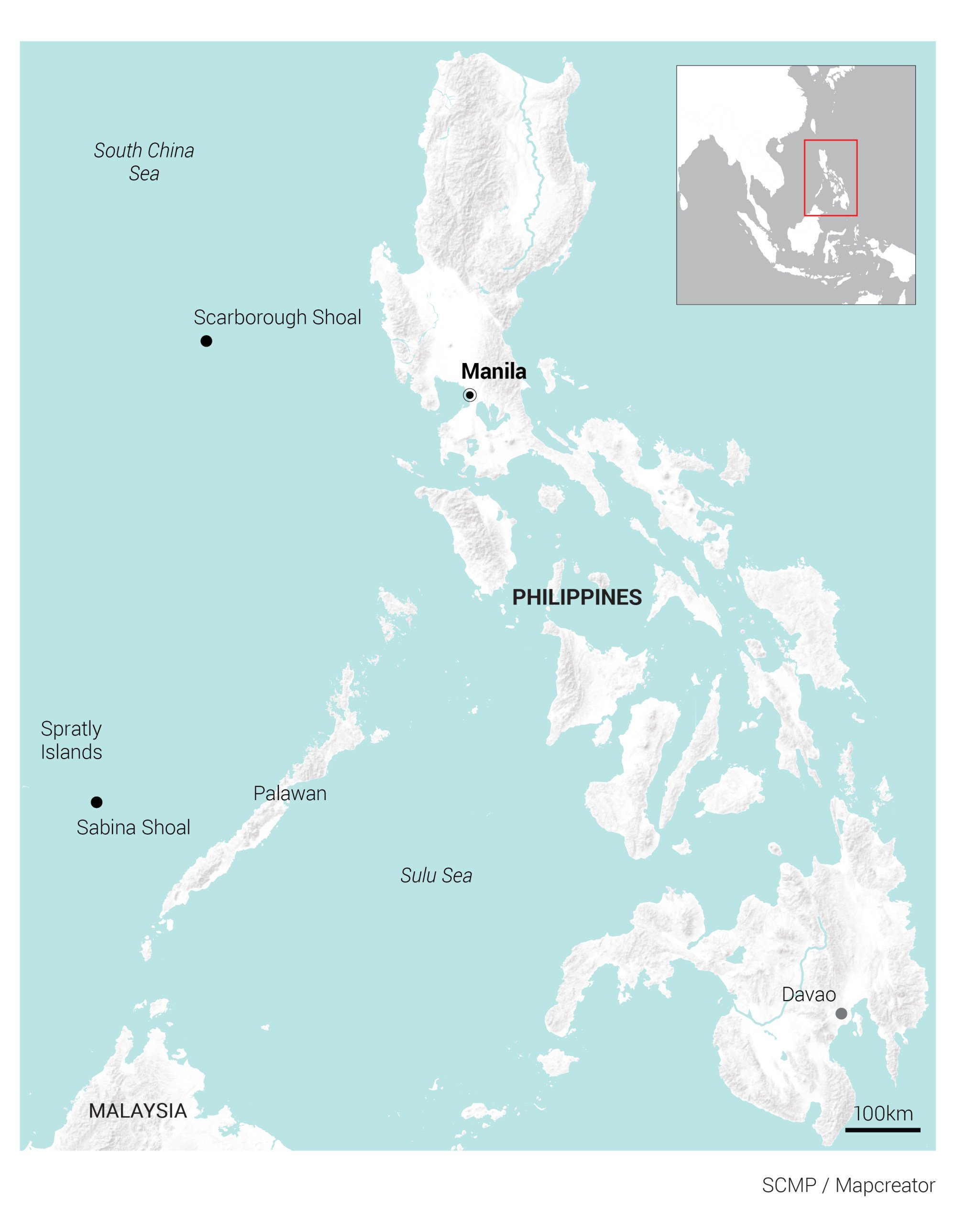China says it is “monitoring” and “effectively controlling” Philippine ships gathering around the disputed Sabina Shoal in the South China Sea, while vowing to “resolutely defend” its territorial sovereignty.
Patrol boats from the Philippines’ Bureau of Fisheries and Aquatic Resources and a number of fishing vessels from the country have gathered in the waters near the Philippine coastguard ship BRP Teresa Magbanua since Saturday, according to a statement from the China Coast Guard.
The Chinese statement said the ship had been “illegally stranded” at the shoal.
Do you have questions about the biggest topics and trends from around the world? Get the answers with SCMP Knowledge, our new platform of curated content with explainers, FAQs, analyses and infographics brought to you by our award-winning team.
“The Chinese coastguard has been monitoring in accordance with the law and effectively controlling the situation throughout the whole process,” spokesman Gan Yu said.
Sabina Shoal, known as Xianbin Jiao in China and Escoda Shoal in the Philippines, has increasingly taken centre stage in the string of recent stand-offs in contested areas of the South China Sea.
It is one of many atolls in the Spratly Islands, called the Nansha in China. China and the Philippines are among the rival claimants to the archipelago.
Located about 75 nautical miles (139km) off the Philippine province of Palawan and close to a reef with rich oil deposits, Sabina Shoal is a rendezvous point for Philippine resupply missions for troops stationed at the BRP Sierra Madre, which sits grounded in the also contested Second Thomas Shoal in the Spratlys.

Manila grounded the World War II-era navy ship there in 1999 to assert its claim and provide a makeshift base for its troops. But the rusting vessel is at increasing risk of collapse. Chinese experts see this as one of the reasons for the recent Philippine efforts to deliver repair materials to the ship – missions that have sparked several clashes with Chinese vessels.
The Philippines has carried out enough reinforcements to make the outpost last “at least another decade”, Bloomberg reported on Saturday, citing four anonymous sources.
Beijing and Manila reached a deal last month on the resupply missions to Second Thomas Shoal but have failed to agree on the key conditions since then.
In a meeting with his Philippine counterpart Enrique Manalo on July 26, Chinese Foreign Minister Wang Yi said the key to the agreement was for Manila to “fulfil its commitments and refrain from changing its position”, or Beijing would “definitely respond resolutely”.
China-Philippines relations were at a “crossroads” and dialogue and consultation were the only way out of conflict and confrontation, Wang told Manalo on the sidelines of a regional meeting in Laos.
The following day, during talks with US Secretary of State Antony Blinken, Wang urged Washington – a treaty ally of Manila – to “not take any more action to fan the flames, stir up trouble or undermine maritime stability” in the South China Sea.
During a visit to Manila last week, Blinken reaffirmed US commitments to the 1951 mutual defence treaty.
“We stand by our ironclad defence commitment to the Philippines,” Blinken said on Tuesday. “That extends to armed attacks on Filipino armed forces, public vessels or aircraft – including the coastguard – anywhere in the Pacific, including the South China Sea.”
On Sunday, Manila confirmed that it had deployed rigid hull inflatable boats (RHIBs) from the BRP Teresa Magbanua, stationed in Sabina Shoal since April to monitor alleged Chinese building of an artificial island there. It said the vessel would help the Philippine fisheries bureau in distributing fuel assistance to Filipino fishers.
According to the Philippine coastguard, the deployment aimed to ensure that Filipino fishermen could access fuel support at offshore fishing grounds “without interference from any party, including the [China] Coast Guard”.
“Currently, the deployed PCG RHIBs are effectively blocking attempts by the Chinese Coast Guard to approach the [fisheries bureau] vessels, thereby safeguarding the fuel distribution process,” coastguard spokesman Jay Tarriela tweeted on Sunday.
Chinese coastguard spokesman Gan said the stationing of the ship infringed upon China’s territorial sovereignty and maritime rights, violated the regional Declaration on the Conduct of Parties in the South China Sea, and undermined peace and stability in the region.
China had “indisputable sovereignty” over the Spratly Islands, including Sabina Shoal, and their adjacent waters, he added.
“The Chinese coastguard will, as always, uphold rights and enforce the law in the waters under its jurisdiction and resolutely defend China’s territorial sovereignty and maritime rights and interests.”
More from South China Morning Post:
- China may take ‘tough measures’ in Sabina Shoal stand-off with Philippines, analysts say
- Philippines fortifies South China Sea outpost for a decade
- South China Sea: Philippines says ‘no incidents’ with China in first resupply mission after deal
- South China Sea: what is Beijing’s ‘maritime militia’ and how does it support the PLA?
For the latest news from the South China Morning Post download our mobile app. Copyright 2024.





